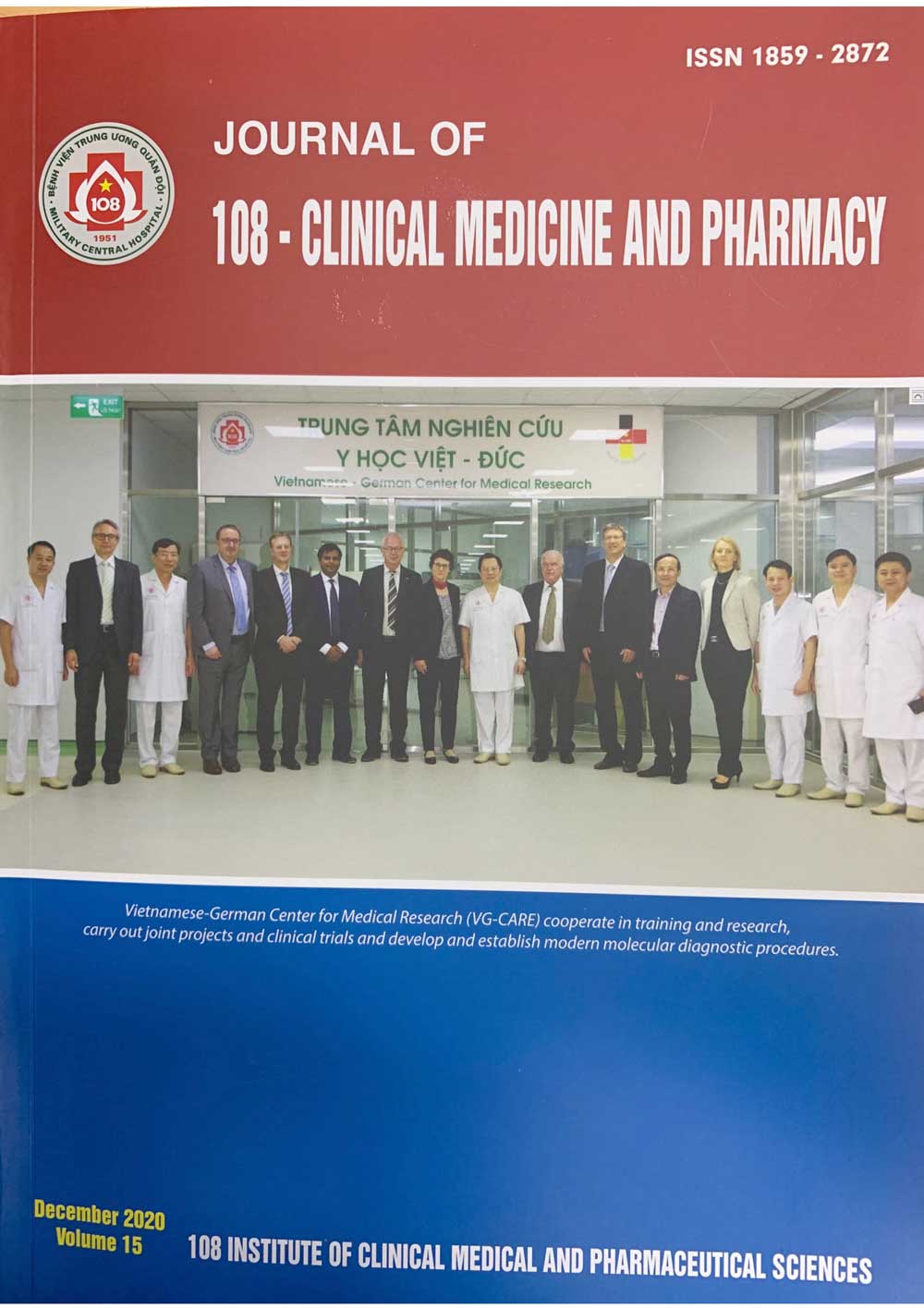Posner-schlossman syndrome in Vietnam: A retrospective review study
Main Article Content
Keywords
Tóm tắt
Objective: To describe the characteristics of patients acquired Posner-Schlossman syndrome (PSS) in Vietnam over a 2-year period and find out the underlying causes of PSS. Subject and method: This study was a retrospective case-series analysis of the clinical charts of 31 patients diagnosed with PSS. All the patients were collected characteristic information 081 and suspected to have CMV or HSV and had undergone real-time PCR of the aqueous humour to determine whether patients have CMV, HSV-positive or CMV, HSV-negative. Result: The mean age of the patients at the initial examination was 50.2 ± 17.4 years. The mean age at the first PSS attack was 45.6 ± 11.6 years. The mean IOP was significantly higher in the affected eyes than in the unaffected eyes (p=0.02). The average BCVA (p=0.14) were lower in the affected eyes than in the unaffected eyes but not reached statistical significance. The majority of these patients were aged 20 - 60 years (64.5%). Autumn demonstrated a little bit higher onset of PSS than other seasons. 33.2% of patients with PSS revealed the CMV cause, the figure for HSV1 was 6.5%. There was no statistical difference about infectious causes between male and female. Conclusion: PSS seems to appear mostly in the middle age. In Vietnam, CMV was the most popular causes of patients with PSS, the second most common causes of this disease was HSV1.
Article Details
Các tài liệu tham khảo
2. Xi L, Zhang L, and Fei W (2018) Cytomegalovirus-related uncontrolled glaucoma in an immunocompetent patient: A case report and systematic review. BMC Ophthalmology 18.
3. Zhong Y et al (2010) Trabeculectomy in the management of glaucomatocyclitic crisis with visual field defect. Ocul Immunol Inflamm 18(3): 233-236.
4. Shazly TA, Aljajeh M, and Latina MA (2011) Posner-Schlossman glaucomatocyclitic crisis. Semin Ophthalmol 26(4-5): 282-284.
5. Hedayatfar A and Chee SP (2014) Posner-Schlossman syndrome associated with cytomegalovirus infection: A case series from a non-endemic area. Int Ophthalmol 34(5): 1123-1129.
6. Kandori M et al (2013) Relationship between the number of cytomegalovirus in anterior chamber and severity of anterior segment inflammation. Jpn J Ophthalmol 57(6): 497-502.
7. Murata K et al (2019) The characteristics of Posner-Schlossman syndrome: A comparison in the surgical outcome between cytomegalovirus-positive and cytomegalovirus-negative patients. Medicine (Baltimore) 98(48): 18123.
8. Jiang JH et al (2017) Posner-Schlossman syndrome in Wenzhou, China: A retrospective review study. Br J Ophthalmol 101(12): 1638-1642.
9. Knox DL (1988) Glaucomatocyclitic crises and systemic disease: Peptic ulcer, other gastrointestinal disorders, allergy and stress. Trans Am Ophthalmol Soc 86: 473-495.
10. Chee SP and Jap A (2008) Presumed fuchs heterochromic iridocyclitis and posner-schlossman syndrome: Comparison of cytomegalovirus-positive and negative eyes. Am J Ophthalmol 146(6): 883-899.
11. Maruyama K et al (2017) Characteristics of cases needing advanced treatment for intractable Posner-Schlossman syndrome. BMC Ophthalmol 17(1): 45.
12. Su CC et al (2014) Clinical outcomes in cytomegalovirus-positive posner-schlossman syndrome patients treated with topical ganciclovir therapy. Am J Ophthalmol 158(5): 1024-1031.
 ISSN: 1859 - 2872
ISSN: 1859 - 2872
